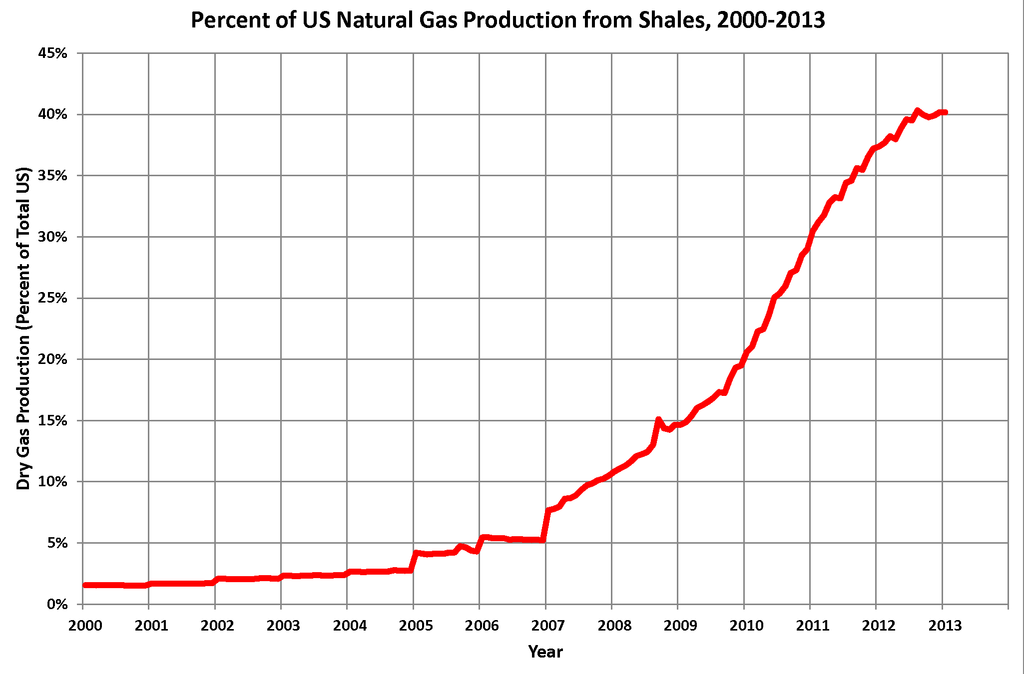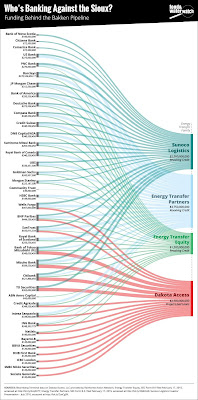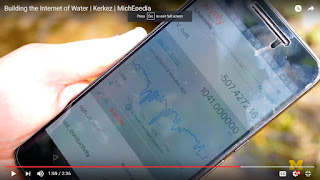Earlier this month I was one of about 1,700 people from 102 countries attending
Adaptation Futures 2016, touted as the biggest-yet climate change adaptation conference, in Rotterdam, Netherlands. It reportedly sold out to capacity each of its three days (May 10-13). The week ended with a day of trips (13 of them) to various flood control landmarks and projects. There were 155 sessions with daily plenaries that were simultaneously translated into French and Spanish. It featured an active Twitter feed, a LinkedIn group, and its own app to facilitate conference networking, Fuseami. There was a "Tool Shed" with its own parallel program of presentations, and a daily poster session after the end of the day's program. It was sponsored chiefly by the Global Programme of Research on Climate Change Vulnerability, Impacts and Adaptation (
PROVIA) alongside the European Commission and the Government of the Netherlands.
There were seven sectoral themes and three cross-cutting issues, all what I would call standard issue except for one...
1. Cities and infrastructure
2. Food, forestry and rural livelihoods
3. Fresh water availability and access
4. Public health
5. Ecosystems and ecosystem based adaptation
6. Disaster risk reduction
7. The Arctic
8. Risk assessment, adaptation planning and evaluation [cross-cutting]
9. Institutions and governance [cross-cutting]
10. Finance, investment and business [cross-cutting]
The Arctic stood out as the only track with a geographical focus.
Poverty and inequality were addressed in sessions across all sectors and issues. The program was a mix of developing world and rich world topics, with some sessions touching on issues common to both, such as early warning systems for public health.
Something unique in my experience for an adaptation conference is that it featured an address by local royalty: Queen Maxima of the Netherlands addressed the conference on the second day, followed by a panel on adaptation finance. She gave
a well-informed speech about the need to provide financial instruments such as weather-indexed crop insurance to smallholder farmers in developing countries. (Unfortunately, she gave her well-informed speech wearing a safety-orange floral sleeveless sun dress that blew out my camera-phone's settings-- I was close enough for a good photo but it yielded me nothing.) The Q&A at the end of the plenary gave an opportunity for the other member of a royal family in the room to address a comment to the queen: Princess Abze Djigma of Burkina Faso (an engineer and CEO of
her own solar company) pointed out that you need to build trust before expecting farmers, or anyone, to buy into an insurance scheme.
A hot topic at the conference was the the
December 2015 Paris agreement, especially the new adaptation funding stream and how it can be managed so as to remain in alignment with economic development projects and goals (and not be a haven for projects that are actually just rejected economic development ideas). There was a session on how to make this funding stream "gender sensitive," a term I'll discuss further below.
A new-to-me term in currency at the conference was "climate services." I understood it to mean the disciplines of mitigation and adaptation combined, but another conference-goer pointed out that it could be applied to almost any project. Elsevier apparently had a launch event for a new journal called
Climate Services at the conference. (Its first volume from March 2016 is
available for free on Science Direct.)
A little Googling tells me that the
Climate Services Partnership was founded in New York in 2011.
Check out some climate service projects featured by the
Global Framework for Climate Services, which was founded in 2009 (or a decision was made to create it) at the
World Climate Conference-3.
Another new-to-me term I encountered at the conference was "adaptation pathways," described in the program as "an emerging approach to decision-making accounting for future uncertainty,
resilience, complex systems and multiple stakeholders’ goals." I missed the CSIRO's presentation introducing the approach, but others were live-tweeting it and discussing it over the coffee breaks. One of its innovations (as I understood it second-hand) is to do an assessment of the collective capacity to act prior to any vulnerability assessment in order to generate more actionable information (e.g., instead of spending resources on an exhaustive examination of vulnerabilities, including those that logistically cannot be reduced).
Read more about it on
the CSIRO's Enabling Adaptation Pathways initiative website.
Good questions that were brought up at the conference:
- Maladaptation and maldevelopment: where they intersect, where adaptation can be maldevelopment, and where development can be maladaptation. It was pointed out that this is a matter of your time horizon-- short-term versus long. The Green Revolution in India established food security, a good short-term success, but it created disparities that took away from resilience in the long-term.
- Ethics in the adaptation planning process: there are value judgments inherent in vulnerability assessments, stakeholder engagement, monitoring and evaluation, etc., and they all need to be made salient and examined.
- NOAA's Roger Pulwarty brought up a few good questions at the opening plenary that were discussed throughout the conference, including:
- How much data do we need? We can pursue a lot more data and still make the wrong decision. He cautioned against producing data to support a pre-determined decision about action: "If we aren't careful we'll end up where we're going."
- Is the goal agreement on action or appropriate action? Riffing on the anecdote about six blind men and an elephant that's used to illustrate how silos make us stupid, he pointed out that six elephants can agree that a human is flat.
- Teleconnections: I heard not just the usual discussion of climate change affecting supply chains for private enterprise, but also how one government's decision about adaptation could have ripple effects in a world region. The common understanding that mitigation is global and adaptation is local needs to be revised: adaptation is also global.
- Insurance: while the role of insurance (especially micro-insurance, weather-indexed insurance, and other developing-world schemes) has been examined in the light of climate change for many years now, it is getting new attention. I heard discussion of its drawbacks and limitations, but also its importance. Governments are now widely recognized as not having sufficient capacity to address the impacts of climate change. Insurance companies and other private financial institutions need to be engaged to work with governments more actively.
- Should there be international standards for adaptation? Who should dictate them? There was only one session on global infrastructure standards, but I think it's an up-and-coming topic. Australia has adopted building standards for climate change. What can we learn from their experience? (Read a 2014 paper on Australian Standard AS 5334 ‘Climate change adaptation for settlements and infrastructure.’ to learn more.)
The conference brought up one old worry and one new worry for me. The old worry: why the short-schrifting of indigenous issues? At this point no climate change conference should treat indigenous adaptation as an afterthought. The only session explicitly addressing this was held in the conference venue's tiniest room with the poorest air circulation (and it was packed, standing room only). There were four speakers, and two of these were not indigenous people, but white people discussing projects they were documenting. The study of traditional environmental knowledge is a well-developed field, it can't be that hard to recruit people to talk about TEK and climate change from an indigenous perspective.
My
new worry is what was discussed as the closing plenary as the "silofication" of adaptation. Adaptation is by its nature interdisciplinary: it will reduce its effectiveness to forge and require an adaptation brand. To some extent, it makes sense to create a silo insofar as it is a new profession and needs a silo to be identified as such, but to a large extent adaptation is a repackaging of a lot of different existing silos (public health, public safety/ disaster response, ecosystem restoration, etc.). There are new conferences springing up in the U.S. that are marketed using adaptation language, charging exorbitant fees, and featuring boutique trademarked tools and frameworks that seem to me to be aimed at generating income predicated on a sense of panic in the face of "the sky is falling" climate change reporting. I'm worried this will alienate the otherwise reasonable skeptics in government who need to start incorporating climate change into their government's planning processes but who don't want to fork over a pile of cash to an adaptation-branded consulting firm in order to do so.
Now for the surprises: things I'm still turning over in my mind that I learned at the conference.
- Lightning is killing a lot of people in India. I noticed this in a talk about heat waves: there was a slide with a graph about deaths by natural events in India to illustrate the heat wave problem, but the tallest column was twice as tall as heat wave deaths, and it was labeled "lightning." I thought I couldn't be reading it right, but turns out over 24,700 have been killed by lightning in India in last 10 years, and its on the exponential rise. A little Googling tells me that some are attributing this to climate change (read Thousands of Lightning Deaths in India Highlight COP21’s Climate Change Challenge - WSJ, Dec. 4, 2015). One sad adaptation strategy is to increase payments to the families of those killed by lightning, apparently usually farmers out tending their fields during the monsoon season.
- In some places a village will lose all its women in a flood, according to Robert Glasser, Special Representative of the UN Secretary-General for Disaster Risk Reduction. Why? Because it is not considered culturally appropriate to teach women to swim, and because women won't take off culturally prescribed restrictive clothing. So they all drown. This insight is still haunting me.
- DON'T TAKE AN ARCTIC CRUISE. Tell everyone you know: just say no to Arctic cruises. There is apparently an influx of cruise ships entering waters they once couldn't because of ice. I got to hear about the lack of response capacity in Iceland and Greenland (three helicopters!). Meanwhile, people are paying 21,000 USD for a berth on the Crystal Serenity to go through the Northwest Passage this fall. Apparently U.S. and Canadian rescue teams are going to -- coincidentally-- conduct training drills in the vicinity of the cruise's maiden voyage, just in case. Beyond the lack of emergency preparedness, there's also the small matter of the impact of these giant cruise ships on the local cultures and environment.
- The Dutch don't talk about flooding. If they bring it up it is to say "this is something we don't worry about." A person working on retrofitting NYC public housing for the next Hurricane Sandy told me that Rotterdam is not retrofitting old housing stock for flooding: it's not even on the table for discussion. I thought there would be a whole track in the conference on flood preparedness, but no. One of our tour guides at the Delta Works (during the field trip day) complained that people laughed when someone tried to organize evacuation drills for flooding in Rotterdam. The Delta Works were built for a once-in-10,000-year flood event, but that is predicated on weather patterns not changing. The peat that the dikes are built on (or in some cases made of) becomes brittle in the summer. If there was an anomalous summer rain event that flooded the Rhine at the same time as a high tide with storm surge in the North Sea, there would be problems. At the closing plenary a young student playing the role of a "flying reporter" was asked her conclusions from the conference, and one of her take-aways was the realization of how lucky they are in the Netherlands to have their seawalls. She wished everywhere in the world they could have the same protections. I thought, "yes, but..."
Some critical afterthoughts about Adaptation Futures:
There were too many sessions. I heard this from more than one experienced adaptation conference-goer. Some presentations were really repetitive of others, and some only tangentially related to adaptation. I'm looking at you, "Livelihood adaptation to long term exposure to volcanic ash."
Although the indigenous approach to adaptation only got one session, there was still a palpable attraction to the idea of traditional environmental knowledge being key to good adaptation. Also, ecosystem-based adaptation. In principle, I think that's fantastic. But I worry that there are unrealistic expectations, even a fetishization of TEK and EbA. I hope the next conference has some grounded-in-reality discussions of how best to combine TEK and EbA with other approaches, keeping an eye on effectiveness and efficiency.
I saw no sessions focusing on the question of how to define adaptation or how to set adaptation goals, but a lot on measurement, monitoring, and evaluation. Can we talk about the dangers of doing the second without the first?
I saw no sessions on ocean acidification. I wonder if it's because it's an
ost-risk. -- That's a new adaptation pun I learned at the conference: a risk so terrible you have to stick your head in the sand (you know, like an ostrich).
Lastly, I have a futile complaint about the use of the term "gender" at Adaptation Futures and elsewhere in the international development context. A term like "gender-sensitivity," such as in the deployment of the Global Environment Fund's new adaptation funds, should really be "sensitivity to women's issues." Coming as I do first from an LGBT human rights background before working on environmental issues, I find the international development field's use of "gender" to mean "related to women" at best annoying. It is as though women are the "people of gender," and everyone else is genderless, or invisible (there are third-gendered people, such as
India's hijras, who might experience climate impacts differently from
cis-gendered women). Men also have gender, and it is salient in the context of climate change, particularly in the context of natural resource-scarcity-driven conflicts. Making "gender" a gloss for "women" weakens the entire gender analysis of climate vulnerability.
Let me end with a billboard that a bunch of us saw and darkly enjoyed while roving around looking for dinner one evening, just a few blocks from the conference site. It's not inspirational, but it has the ring of truth after you've dwelled a while in the world of climate change adaptation.
Onward toward the next Adaptation Futures: see you in Cape Town in 2018!











